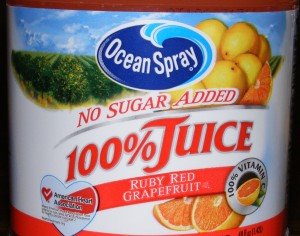About one percent of the U.S. population suffers from a sensitivity to peanuts. Accordingly, foods are labeled to warn if any peanut products are contained. Even packages of roasted peanuts that are labeled “PEANUTS” in giant letters, also include a list of ingredients showing peanuts, plus a warning that says, “Warning: Contains Peanuts”, as though a package labeled PEANUTS might not contain peanuts.
About the same percentage of the U.S. population, about one percent, suffers from a gluten sensitivity that sickens and causes physical damage to the digestive system, yet there is no requirement for food labels to show a warning for gluten or ingredients that contain gluten. Why?
A few specialty food makers produce gluten-free products and label them as such but most mainstream food makers do not. Wal-Mart’s Great Value brand does label gluten-free products, which is great, but products without the gluten-free label are a guessing game. They might or might not contain gluten. Kraft Foods has promised to label anything containing gluten by including “wheat” in the ingredients list. That’s very nice of them still does not provide much comfort since nobody is under government mandate to label foods properly like they are when it comes to peanuts.
Gluten is normally associated with wheat but it’s not that simple. That’s why proper labeling is very important when it comes to gluten. Gluten can appear in foods in unexpected ways. Flavorings such as caramel, stabilizers and thickeners used in ice cream, ketchup, salad dressings, and many other ingredients can contain gluten depending on how they are made. There’s no way for the customer to know. And just because one bottle of A1 Steak Sauce does not make you sick does not mean the next bottle won’t because the source of caramel in the product might change from a gluten-free source to one that contains gluten. Nothing on the label will change to show the difference. There’s no way for the customer to know unless the maker is required to specifically put gluten or “wheat” on the label.
I don’t know why this is not done–why the FDA does not require gluten warnings on foods.

Recent Comments